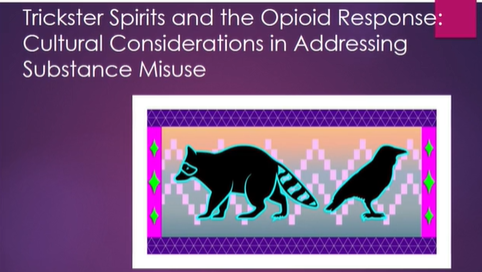
How do Indigenous knowledge and evidence-based practices work together to help people with substance use disorder (SUD) in Tribal communities on their path to recovery? Danica Love Brown, MSW, CACIII, PhD, behavioral health programs director for Northwest Portland Area Indian Health Board and a collaborator on its Tribal Opioid Response Agenda, outlined various ways at the Taking Action Summit.
Dr. Brown, who is a citizen of the Choctaw Nation of Oklahoma, discussed how historical trauma—caused by genocide, assimilation, and oppression—impacts Indigenous people today and is connected to current health disparities.1 Through epigenetic transfer, trauma and ancestral wisdom can be passed down from one generation to the next, she explained.
To providers serving clients in Tribal communities, Dr. Brown advised a “message of hope” that includes letting clients know that trauma does not define them, that it’s not a “character flaw” but a “normal response to an extraordinary event.” Moreover, as ancestral knowledge and wisdom are also passed down through generations, “culture can act as a buffer” in mitigating the impact of trauma.
In the treatment of SUD, Dr. Brown said, “Hope is a really powerful medicine.” Connecting with family and community, developing an increased sense of purpose, commitment to personal mission, and volunteerism can help with recovery. And along with connection, Dr. Brown emphasized that culture is prevention. By incorporating Indigenous knowledge about health and wellness, as well as other traditional practices, treatment programs can better serve clients in Tribal communities.
As an example of culture informing treatment, Dr. Brown discussed the role of the Trickster Spirit—a sacred being, creative but mischievous—who appears in many stories. This disruptive figure draws attention to a person’s relationship with medicine, which may begin as a search for healing but can change to dependence. The Trickster reveals how substances can affect people in “sneaky ways” and teaches lessons of “respect for the spirit in the medicines we use.”
Dr. Brown stressed understanding the social and political factors that have contributed to health disparities for people of color. “Many times we put the onus of healing and treatment on individuals,” she said, “when it’s a societal issue that impacts our experience.” “A successful mental health system must find ways to integrate mainstream services with culturally traditional services to address the mental health needs of communities of color within the broader context of their lives.”
View Dr. Brown's presentation from the Taking Action Summit.

Danica Love Brown, MSW, CACIII, PhD
Behavioral Health Programs Director, Northwest Portland Area Indian Health Board
[1] Walters, K. L., Simoni, J. M., & Evans-Campbell, T. (2002). Substance use among American Indians and Alaska natives: incorporating culture in an "indigenist" stress-coping paradigm. Public Health Reports, 117, Suppl 1, S104–S117.